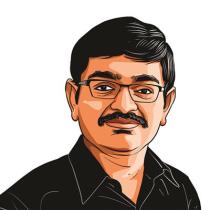Primary neglect
Primary healthcare needs greater emphasis in medical education

The consensus today is that the sole answer to the problem at hand lies in attracting more MBBS doctors into villages
In 2005, for every 10,000 people, India had 10 doctors in urban areas but only one in rural areas. And the situation today isn’t a lot different. The Lancet reports that even though the number of health facilities in rural areas has shown an upward trend in the last decade, how to get enough doctors to work in villages still remains a formidable challenge for India. The consensus today is that the sole answer to the problem at hand lies in attracting more MBBS doctors into villages, primarily with better working conditions, adequate infrastructure, and increased salaries. But the problem transcends the scope of this rather simplistic solution. Its moorings lie in the tastes our medical education system has cultivated over the years.
D Banerji mentions two fundamental shortcomings in the existing system of medical education: First, “it was evolved to serve a very small privileged section of the society”, and second, “along with the natural science essentials, it carried with it the cultural accretions of the West”. To serve the country’s health requirements is one of the prime objectives of medical education. Keeping with this, our undergraduate medical education was to focus on creating a dedicated and competent primary-care physician, sensitised to the desirability of primary care for the country’s health needs, especially those of its rural population. This, however, hardly fructified.
The past few decades have seen a number of passionate calls for medical curricular reform. The Shrivastav Committee (1975) advised the reorientation of medical education in tune with national needs and priorities, while the National Health Policy (1983) advocated training a primary-care physician capable enough of providing essential health services to the rural population. The Regulations On Graduate Medical Education promulgated in 1997 laid a strong emphasis on health and community, apart from prescribing horizontal and vertical integration and problem-based learning.
The goal has been twofold: That of creating not only a competent primary-care physician but also one that is oriented to “health and community” rather than “disease and hospital”. While a debate over how much of the former has been realised makes a topic for another day, success in the latter evidently remains elusive. Despite some positive curricular changes directed at orienting medical education towards the community, we have scarcely succeeded in inculcating a “social perspective” that can allow us to sympathise and relate to the health needs of the community.
A few pertinent and timely observations need to be made here. We, through our medical curriculum, haven’t actively sought to acquaint medical students with the sociocultural setting in which medicine functions in India. Topics under community medicine, such as maternal and child health and sanitation, have been inadequately integrated with clinical subjects. The current amount and rigour of community postings are grossly insufficient to lead to the desired end, and tertiary hospitals located in urban areas continue to be the temples of primary medical education, alienating it from much of the ground reality of healthcare. Certainly, it is futile to expect doctors trained under such circumstances to feel comfortable in primary health centres at the back of beyond.
Much more could have been done towards ennobling and upholding primary care as a dignified province of healthcare through medical education. While there’s no denying that the way to secondary and tertiary medicine has to pass through primary medicine, it ill behooves a country like India to allow undergraduate medical education to be relegated to the status of a mere stepping stone to medical specialisation and super-specialisation. Present-day MBBS education, which provides little more than a cursory overview of medical specialties, does more to prime medical students for specialisation than shape them into well-rounded primary care physicians. With medical education failing to hold the torch for primary care, an affiliation for specialty- and super-specialty medicine has grown largely unchecked in a setting which has perennially failed to prioritise primary care over hospital care. As a result, while medical education was supposed to foster the conviction that the real indicators of development are an improvement in things as fundamental as nutrition and sanitation, it has ended up instilling a strong adoration for sophisticated tertiary care systems of relevance to only an affluent few.
Unless the motivation of our medical workforce is aligned with our healthcare needs, no measure shall succeed in effecting a solution to our problem. We need a medical curriculum that is adequately oriented to primary care and community health, and a healthcare system and policy environment that gives them their due. We can no longer continue to adhere to an “overflow principle” of sorts whereby simply manufacturing more doctors would automatically pump more of them into our villages. The kind of training imparted largely decides the kind of motivation carried into service. This has to be realised at the earliest.
The writer is a medical doctor and editor of The Indian Practitioner
For all the latest Opinion News, download Indian Express App
More From Soham D. Bhaduri
- The NEXT PromiseProposal to adapt MBBS exam to a National Exit Test can revitalise medical education..
- Primary MistakeBudget’s bias toward privately-delivered care undermines universal health coverage..







































No hay comentarios:
Publicar un comentario